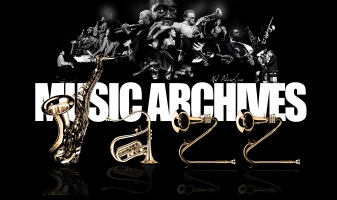
 |
Chuck Israels ‘Bass Notes:Jazz in American Culture |
Post Reply 
|
| Author | |
snobb 
Forum Admin Group 

Site Admin Joined: 22 Dec 2010 Location: Vilnius Status: Offline Points: 28469 |
 Post Options Post Options
 Thanks(0) Thanks(0)
 Quote Quote  Reply Reply
 Topic: Chuck Israels ‘Bass Notes:Jazz in American Culture Topic: Chuck Israels ‘Bass Notes:Jazz in American CulturePosted: 26 Jan 2024 at 3:53am |
|
BOOK REVIEWS
Chuck Israels – ‘Bass Notes: Jazz in American Culture: A Personal View’Chuck Israels – Bass Notes: Jazz in American Culture: A Personal View
Chuck Israels certainly hasn’t rushed to give us his recollections and notions about jazz in America. Now aged 87, the New York-born bass player usually described as a “living legend” has had lengthy, overlapping careers as player, composer/arranger/organiser and college educator. Now, he’s found time to finish a look back at all of those aspects of the jazz life, in a mostly autobiographical vein. The result is not a full account, which would be much lengthier. And the “notes” in the title perhaps acknowledge that the book combines somewhat disparate elements. Various chapters read as if written at different times, then revised and assembled for this volume. That leads to some repetition that an alert editor would have removed. Yet while the book doesn’t entirely cohere, it contains much fascinating, if sometimes slightly tantalising, material. Fascinating mainly because of Israel’s six years as the bass player in Bill Evans’ classic trio, which he joined in 1961 after Scott La Faro’s early death. Israels declares that he was never a match for La Faro, but nevertheless helped maintained that trio’s extraordinarily creative run through the mid-60s. The opening chapters detail Israel’s path from a cultured, musical home, in New York, then Cleveland, through early experience playing in and around Boston, during a post-college sojourn in Paris, and in New York, establishing the reputation that led to the call from Evans in his moment of need. The pianist’s inspirational trio, with Paul Motian on drums, had established an unprecedented level of three-way interaction, with more prominent roles for bass and drum set than previously heard. Israels, as well studied classically as in jazz, had similar aspirations toward spontaneity within structure, and was besotted with the fluidly elaborated counterpoint between Evans and La Faro’s bass. He is modest throughout, but also recalls a certain confidence. He was in the club in New York when the trio recorded the unsurpassed Sunday at the Village Vanguard: “I was thrilled by the music and overwhelmed by Scotty’s virtuosity. I thought I could do it, too, though not with his speed.” Then one arrives at the tantalising bit. Because, actually, he could. And, as a musical scholar of an analytical bent as well as a pretty good writer, he has a go at describing how it all worked. Having someone thus equipped giving an inside account of the playing of perhaps the most influential improvising piano group ever is the jazz equivalent of a view of the 1960s moon landings from inside the Lunar module – a point of view available to vanishingly few people. This is the most rewarding part of the book, a nice complement to the late Peter Pettinger’s excellent biography of the pianist. But it delivers a little less than it might because Israels is reaching so far back that memory fails. For example, he recalls some drummerless nights playing as a trio with Evans and Jim Hall on guitar, who he avers made some of the best music ever playing as a duo. We have recordings to confirm that but, alas, from the few live trio shows, “I can’t remember a thing about how it sounded with my bass playing”. This isn’t entirely a function of distance, he suggests: He was in musical heaven, but “I must have been too occupied within the music to leave a part of myself free to remember the experience”. The concentration required to play in such a context is of course intense, at several levels. Israels tries to convey the kind of mental agility called for. “Part of your consciousness must live in a world that’s slowed down enough to take the time to observe what’s going on in real time”, he writes. He’s talking about meshing tempos here, but it sounds like a facility that applies to other aspects of music in the moment: “You jump out of your subjective reactions momentarily to hear what you are playing – like a third party to the action – check things out for an instant, make the necessary adjustment, and jump back in”. Little wonder, then, that there’s not enough capacity to commit the event to memory! The absence of any lasting impression of Hall, Evans and Israels playing together is typical of the honesty that comes across throughout the book. Honest, too, is his recollection that he never really got to know Evans well. After a disturbing early encounter with the pianist’s heroin habit, he made it clear he wanted nothing to do with that part of his life. That, together with the leader’s general reserve – he customarily appeared just before a show and often vanished immediately afterwards – meant that, in spite of those years of gigs, many conversations about music never happened. Israels regrets this, and so do we, perhaps, even though his success in the trio with such scant interchange with Evans away from the bandstand is testament to how powerfully his musical intuitions aligned with the pianist’s. All that takes us well over half way through the book. The rest is more sketchy, with recollections of the pioneering repertoire band Israels eventually put together, the National Jazz Ensemble. This was in pursuit of the same musical ideals, the foundational virtues of classic jazz as he sees them: the realisation of mutually compatible creativity, in the moment, using every resource of rhythm, melody and harmony, while staying with the form. As he puts it, “It’s always boiled down to form, tempo, and unity of rhythmic accent for me. Without that agreement, it just feels too separate to qualify as an ensemble experience”. That goes with a marked aversion for free music as it developed from the 1960s on. He concedes that Ornette Coleman was “not totally incoherent”, but sees little virtue in his improvisation. As for other, even more unfettered playing, he is brutally dismissive. “The only reason formless free jazz is worth discussing is to try and figure out why people are taken in by it and accept its unrelenting boredom.” The boredom arises, he insists, because if there is no form, there is no basis for expectation, hence no real tension and release, no effective drama, no story. Well, that’s a view that has some warrant in music psychology. David Huron, for example, has a theory expounded at book length (in Sweet Anticipation) about how a listener’s musical satisfaction derives from predictions, conscious or otherwise, confounded or borne out. But even that book, which Israels doesn’t reference, fails to convince that the author has a theory that embraces everything music can do. Israels, perhaps, could rest with the claim that music that doesn’t do what he aims for doesn’t sound like real jazz to him, rather than insisting that it is worthless. His view here is also bound up with a lament for the lost era of the great American songbook, when popular music had a musical sophistication which evaporated, for him, some time in the 1960s. These notions, along with some of his remarks about jazz education, “a bloated industry sunk by its own weight”, come across as arguments that others worked through years or even decades ago. Best to take them, perhaps, as indications that Israels had a strong, well-worked out aesthetic that underpinned his own musical efforts, which have continued in recent years in Portland with a new ensemble. They are unlikely to persuade listeners who have now enjoyed several generations of jazz players who are as comfortable with “outside” as “inside” playing, and can mix them at will. They do add up, though, to a strong statement of musical values worth contemplating. Although his book is a tad sketchy, autobiographically speaking, it does show this engaging, articulate, sometimes curmudgeonly author, freely critical both of others and of his younger self, as maintaining an unswerving commitment to what he sees as the essentials of jazz for more than sixty years. But his more focussed effort to pin down Evans’ contribution will probably satisfy more readers than these broader reflections on right and wrong ways of making music. Jon Turney writes about jazz, and other things, from Bristol. jonturney.wordpress.com and https://bsky.app/profile/jonturney.bsky.social LINK: Chuck Israels’s website from https://londonjazznews.com Edited by snobb - 26 Jan 2024 at 3:53am |
|
 |
|
Post Reply 
|
|
|
Tweet
|
| Forum Jump | Forum Permissions  You cannot post new topics in this forum You cannot reply to topics in this forum You cannot delete your posts in this forum You cannot edit your posts in this forum You cannot create polls in this forum You cannot vote in polls in this forum |